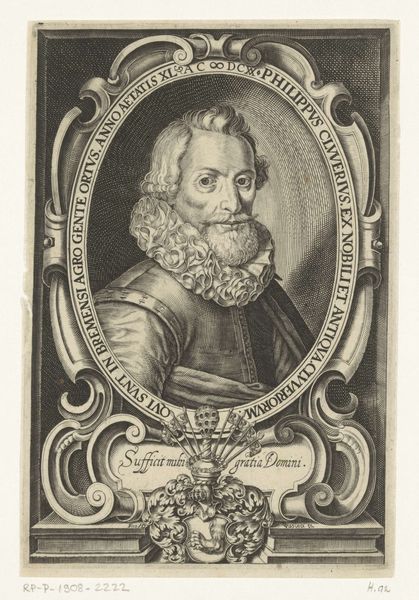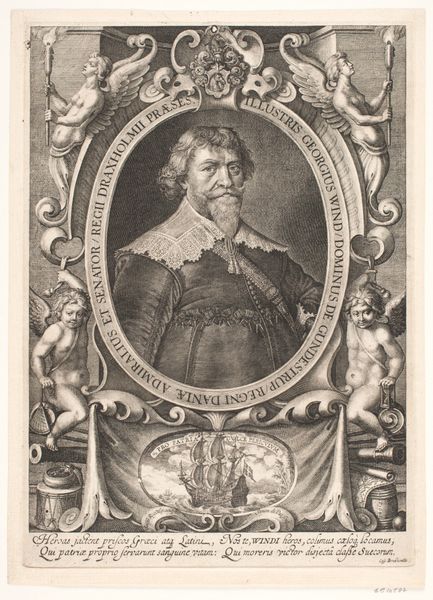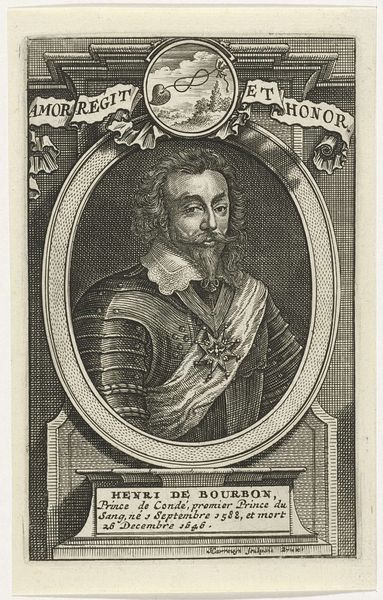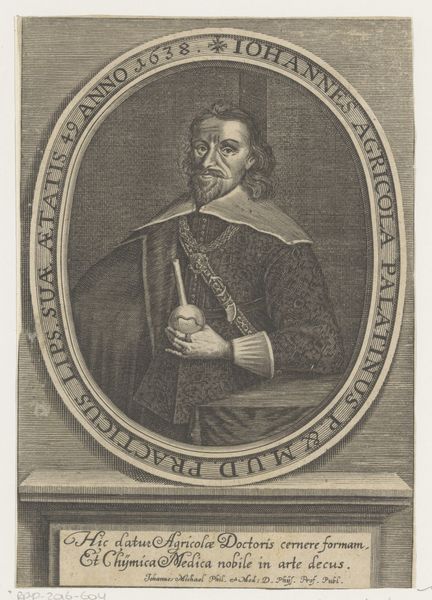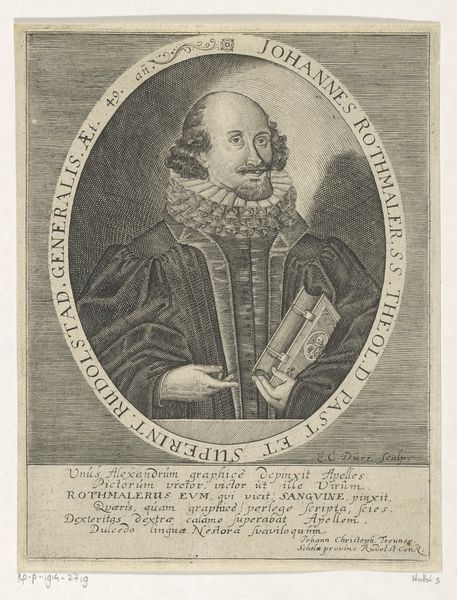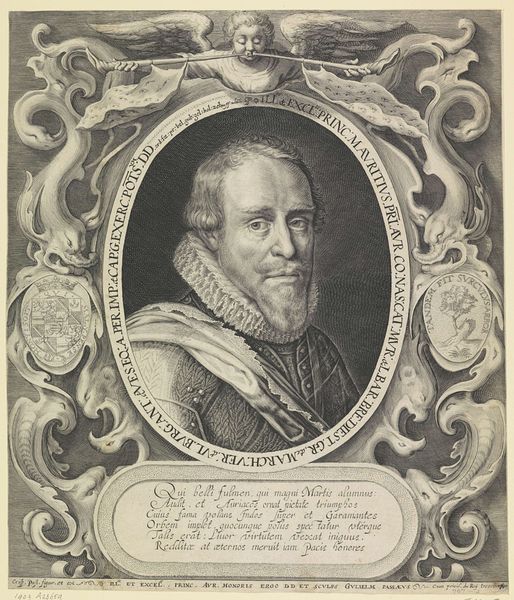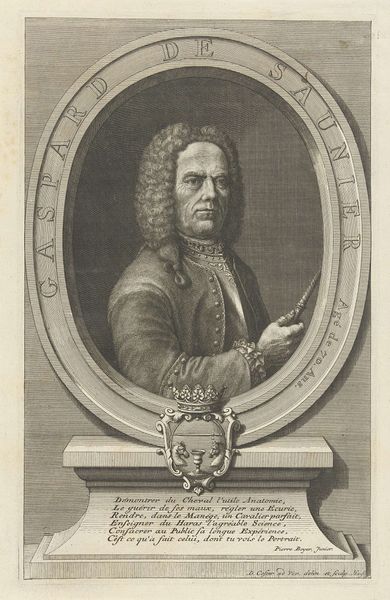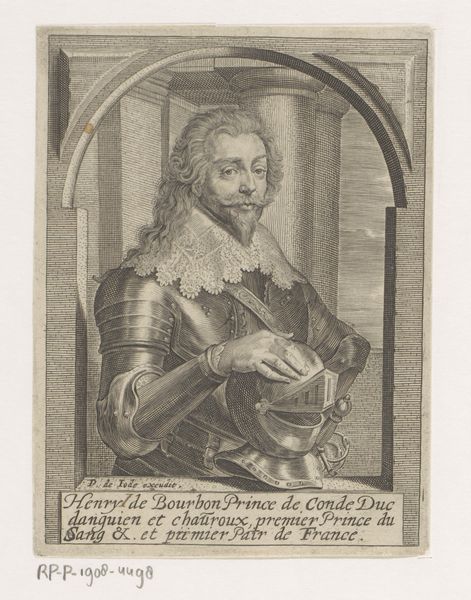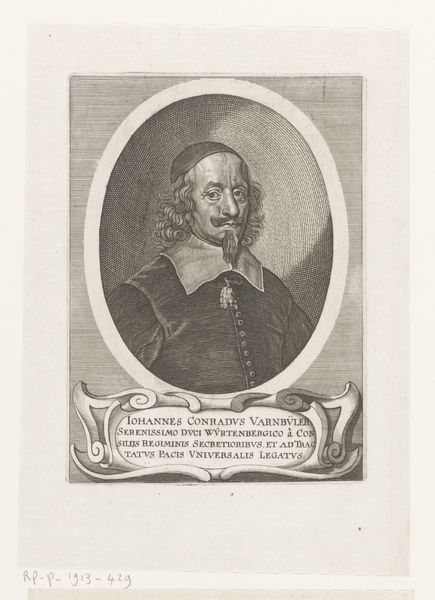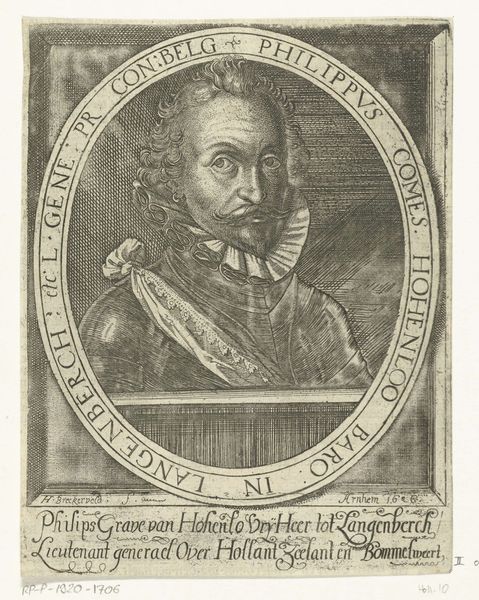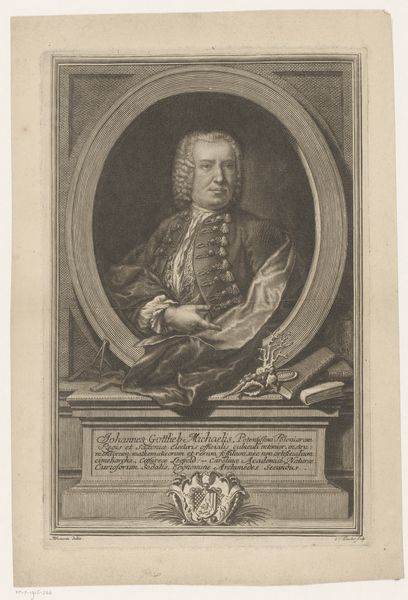
print, engraving
#
portrait
#
aged paper
#
toned paper
#
baroque
# print
#
old engraving style
#
woodcut effect
#
history-painting
#
engraving
Dimensions: height 185 mm, width 129 mm
Copyright: Rijks Museum: Open Domain
Curator: This engraving, created by Joannes Meyssens between 1640 and 1670, depicts the "Portret van Filips graaf van Hohenlohe." It’s held in the collection of the Rijksmuseum. Editor: Immediately, the steely gaze of the subject strikes me. The level of detail, particularly in the ruff and armor, suggests a desire to convey power, though there is also vulnerability hinted at in his expression. Curator: Absolutely. Consider the socio-political climate in which this portrait was produced. The Count of Hohenlohe was a prominent military figure. Prints like this served to circulate his image, reinforcing his authority within the Dutch Republic, which was still solidifying its independence during the Eighty Years' War. The setting and emblems create this aura. Editor: And that frame, packed with detail! Those cherubic figures almost feel like spectators flanking a stage, peering out as the narrative of leadership is carefully constructed through symbolism and posture. I also like the frame including weapons as symbol of power Curator: Indeed, it's no accident that he’s adorned in full armor. Meyssens shrewdly employed printmaking, in order to connect noble leaders with the rising political ambitions. This engraving becomes an object that participated actively within power struggles. Editor: I wonder how the portrait was actually received, both by Hohenlohe himself and by those who viewed it. Was this a representation he embraced, or was there any friction between the artist’s portrayal and Hohenlohe’s own self-image? It really encapsulates how portraiture operates in a dance between power, representation, and social perception. Curator: It's an essential consideration, isn't it? The public reception of such images would certainly influence both Meyssens’ subsequent commissions and the visual language used in other portraits of the period. Furthermore, what about the people unable to afford such prints? Editor: Precisely, it sparks a broader discussion about visual representation in leadership during conflict! Considering its political implications has changed my first impressions, especially thinking about who has access to these images and stories. Curator: I completely agree. Analyzing how artistic representations shape the public's image is essential. Editor: A worthwhile endeavor indeed!
Comments
No comments
Be the first to comment and join the conversation on the ultimate creative platform.
